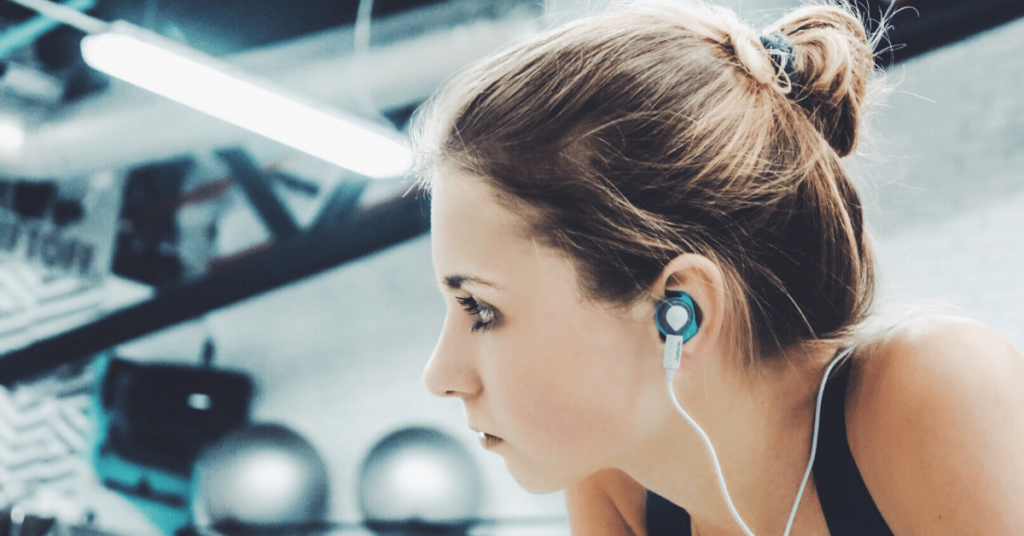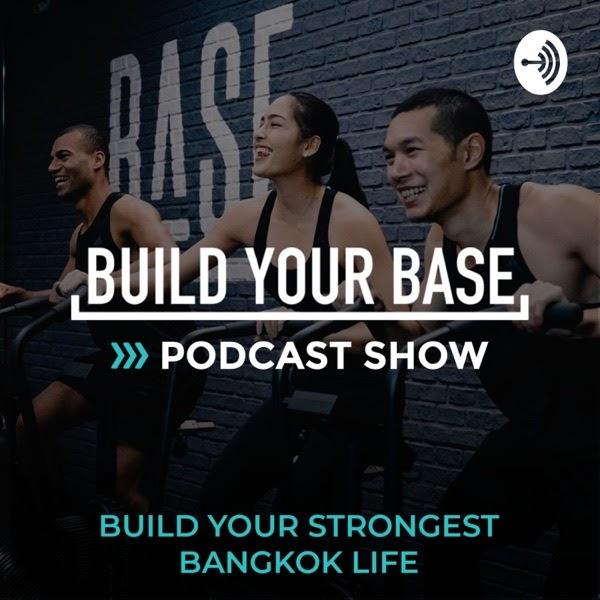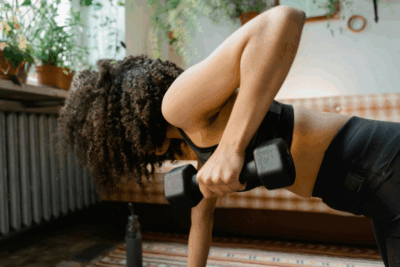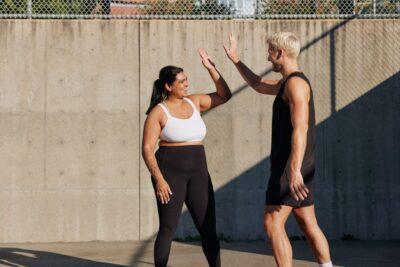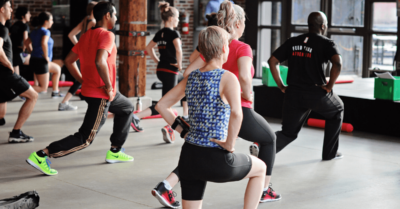More people are listening to podcasts than ever before. 50% of all US homes are podcast fans. That’s over 60 million homes. With the ability to easily access podcasts apps like Spotify and Apple Podcasts, smartphones are driving podcast use. Roughly 90 million Americans listen to podcasts every month.
Audio is gaining massively in popularity as a content marketing avenue. There’s a huge opportunity to build a genuine connection with your audience. Podcasts are a unique type of long-form content. You can talk about topics much more in-depth than you would on social media and show off your personality. There’s never been a better time to start a podcast for your gym. In this article, we talk you through the benefits of starting a podcast and give you step-by-step instructions on developing and hosting a one of your own. Skip ahead to:
- The Advantages of Starting a Podcast for Your Business
- 4 Fitness Podcasts to Inspire You
- The Fitness Entrepreneur Leading the Way With Podcasts
- How to Start a Podcast for Your Gym
The Advantages of Starting a Podcast for Your Business
Podcasts cover a wide range of topics, from fitness and marketing to comedy and true crime. Incorporating podcasts into your marketing plan is a creative way to connect with your audience. The world of podcasting has given marketers a new way to reach potential customers. If you’re thinking about starting a podcast for your gym, here are three advantages of podcasting for your business.
Authority
When you create a podcast, you create a platform to share your expertise. It could be a podcast to give fitness instructors industry knowledge or to share the best workout and motivation advice for your customers. However, you position your podcast; one thing remains the same. You are establishing yourself as an authority in the industry. Developing an authoritative presence helps to build trust with your audience and customers.
Brand Awareness
Consistent and regular podcasts help to build brand awareness to eventually make your business a household name. You can include information about your services when they are relevant to the theme or topic of the episode. This helps to keep increasing brand awareness and building a potentially brand-new audience base.
Audience Connection
Some podcasts are 20 minutes, while others are three hours long. No one is going to read a blog post for three hours. But they will listen to a podcast even if it’s not all in one sitting. When you have access to that amount of time, you’re not limited to what you can talk about. Podcasters have an opportunity to connect with their audience very genuinely.
4 Fitness Podcasts to Inspire You
Everyone has their own thoughts on what makes a good podcast. But a well-spoken host with a passion for their subject area, great guests, and high-quality audio tends to equal a popular podcast. Here are four great fitness podcasts to get an idea of how different brands use podcasts in their marketing.
1. FoundMyFitness
The FoundMyFitness Podcast, alongside the app, is created and hosted by Dr. Rhonda Patrick. The podcast is aimed at the athlete that wants to know more. She brings on experts and doctors to help discuss topics like intermittent fasting, macronutrients, and the power of the mind. Although some terms can be a little challenging to understand, Rhonda breaks down the science into digestible chunks.
The podcast has a range of episode lengths, from 20 minutes to almost three hours. The length of each episode depends on how in-depth the topic needs to go. Clearly, the FoundMyFitness Podcast is positioned as an expert authority in the science and fitness space.
2. The Bodybuilding.Com Podcast
Hosted by Bodybuiling.com editors Nick Collias and Heather Eastman, this podcast delivers quality and in-depth content. Each episode features in-depth knowledge and often uses humor and expert guests to explore topics. Episodes tend to focus on physical enhancement, bodybuilding, and workout programs. The podcast remains on-brand throughout its podcast.
3. Trained by Nike
The Trained by Nike Podcast is hosted by Nike’s Senior of Nike Performance, Ryan Flaherty. An expert in his own right, Flaherty is known for his work with top athletes like Lebron James. The podcast features interviews with experts. Episodes cover the latest fitness trends, innovations, insights, and conversations with experts on what’s making the biggest impact in the training world.
The Nike podcast delivers weekly episodes around the 30-minute mark. You could easily listen to a whole episode in one sitting. Recent episodes cover topics like Staying Fit While Staying Home and Meditation in Times of Crisis.
4. AMRAP Mentality with Jason Khalipa
Jason Khalipa is a former American professional CrossFit Games athlete. The podcast features a few different themes, including one-on-one interviews with athletes and best practices for coping with mental challenges. A new episode is released every Thursday with a combination of short and longer podcasts up to 45 minutes.
The Fitness Entrepreneur Leading the Way With Podcasts
In the latest episode of The Fitness Founders Podcast, we spoke with Jack Thomas, owner of BASE and host of the Fitness Business Asia Podcast. On top of running his now totally online business and hosting the podcast, Jack has recently seized a new opportunity to inspire his community with the Build Your Base Podcast Show.
In this weekly show Jack talks to some fantastic guests including coaches, nutritionists, athletes and more and it’s well worth a listen to inspire your own podcast ideas.
How to Start a Podcast for Your Gym
As a gym owner, learning to start and create a podcast is definitely something you should consider. It can help you to reach a growing audience of podcast listeners and scale your business through content marketing.
Develop an Idea
The first step in starting a podcast is to develop an idea. Think about the concept. What sort of topic and themes do you want to cover? Your podcast is filling a niche. When starting a podcast, the majority of people tend to fall into two categories. The first is that you’re thinking of hosting a podcast to bring in more traffic for your business. The second is that you’re looking to start a podcast as a business with the idea that it will generate money over time. You likely fall into category one.
The Top 10 Barriers
Slowing Your Fitness
Business Growth
Discover more Your podcast should represent your brand well but isn’t a platform to just push your services. When developing an idea, think about why you are starting it? Where does the podcast fit in with your overall business goals? Identify what your podcast goals are. Maybe you want to generate more gym membership leads, be recognized as an industry leader, or share an important message with your audience. Once you start answering these kinds of questions, your podcast concept should begin to fall into place.
Decide on Your Podcast Format
The next step is to decide on your podcast format. Think about the length you want each episode to be. This should be a time that you can commit to and consider how often you will release episodes. Here are some of the most common podcast formats:
- Interviews and panels
- Solo commentary
- Co-hosts
- Storytelling
- Educational
- Conversational
Of course, you don’t have to stick to one format; you can use a hybrid model. You might want to have a monthly fitness expert panel with weekly episodes featuring solo commentary. Depending on your concept, some formats might work better for you than others.
Once you have thought about your concept and nailed down your format, you can start thinking about your podcast name. Also, look at the intro music that will accompany your podcast. When you decide on a structure, you will know how often you want to produce podcasts and topics to focus on. Make a podcast plan and brainstorm good episode titles and themes.
Create Your Podcast Artwork and Description
The podcast cover art is the first thing listeners will see on social media and podcast listings like Apple Podcasts, iTunes, and Spotify. Your artwork should include the name of your show and any relevant logos or images that are associated with your brand. The artwork should simply and effectively communicate the subject of your podcast. The majority of listeners will view your podcast cover art on a mobile phone. So, make sure the image is legible and will stand out on iPhones and Android.
Your podcast description is a summary paragraph that describes your show to your audience. Write a very compelling description. Think about the keywords and phrases your audience would use to find your podcast and include them. You have a little more freedom with the description, so make it a good one. Put yourself in the shoes of your listeners and think about how they would describe the show. You have 4000 characters to play with, so there’s plenty of room to talk about yourself and the show. But most podcast apps won’t display the whole 4000 characters. So, put the most important details in the top 150 characters. Be clear, concise, and get to the point.
Buzzsprout talks about how to create stunning artwork in this video, specifically for Apple. They go through Apple’s guidelines and how to make your artwork stand out from the competition.
Podcast Recording Software and Equipment
When starting a podcast, you need to buy specific recording equipment. It’s essential that when you start a podcast, you invest in good-quality equipment so that your audio sounds great. You probably don’t need to spend as much money as you might think. The most important piece of equipment is a microphone. Podcast listeners are accustomed to a certain level of sound quality in the podcast world. You could have the most fantastic content, but if your sound quality isn’t up to scratch, people could still leave to find something that sounds better.
The bare minimum you need is a laptop, USB microphone, and internet access. Other equipment to consider is:
- Headphones or headsets
- USB microphone or XLR microphone
- Audio editing software like Audacity or GarageBand
- Mic stands
- Mixer
- Digital recorder
This video talks about the best podcast setup for beginners. It breaks down equipment recommendations for solo podcasts, 2-person podcasts, and 3-4 person podcasts. It focuses on easy-to-use equipment that can grow with you.
Record Your First Episode
Before you record your first episode, set up your equipment and test your set up first. To get your microphone ready to record, connect it to your audio device or computer. When you’re just starting, it’s easier to use a USB microphone if you don’t have any previous audio experience. Here are a few microphone tips to get the best results:
- Place the microphone 2-4 inches from your mouth
- Test multiple distance and angles to find the best sound
- Choose a quiet audio recording location
- Run a test recording
Remember that even the best podcasts out there probably started with a few bad episodes. For your first episode, write an outline so that you don’t end up rambling. It’s down to you whether you just write down show notes to cover or if you want a more scripted podcast. Focus on good delivery and consistent sound levels. Once you’ve practiced your mic technique, and set up your equipment, hit the record button.
Edit and Upload Your First Episode
It’s easy to get caught up in the recording process of your first episode, but editing is where your podcast comes together. During post-production, you remove audible distractions, segment audio, add pre-recorded intros or voiceovers, and outros. Editing software can help make this process much easier for those who aren’t as technically inclined. Depending on your budget and goals, there are different editing software platforms available, including:
- Adobe Audition
- GarageBand
- Audacity
- Pro Tools
- Logix Pro X
Podcast Hosting and Submitting to Directories
Once you’ve saved and exported your audio files, you need to think about podcast hosting. Podcast hosts or media hosts are services that store your podcasts and allow users to listen and download your show. Popular podcast hosting services include Buzzsprout and Captivate.
After you have set up your podcast hosting, you can then submit it to directories where users can listen to your podcast from various places like Apple Podcasts, Google Podcasts, Spotify, and Stitcher. A good media host should have a set of auto-submit tools for submitting and uploading to directories.
Promote Your Podcast
It’s essential to take the time to promote your podcast. Now that you’ve started a new show, you want to cultivate a community of listeners who value your insight and listen regularly. With quality content and good audio, your podcast is a valuable content marketing tool. Here are a few tips to promote your own podcast:
- Submit to podcast directories
- Encourage listeners to share and subscribe
- Publish at the right time
- Be a podcast guest on a relevant show
- Tease podcast episode on social media
In Summary
As more and more people are listening to podcasts, business owners have a new way to reach their audience. Podcasts allow you to connect with listeners more meaningfully. Although podcasts have been around for a while, there’s still an opportunity to take advantage of a growing user base. By delivering engaging content, you can gain authority, increase brand awareness, and grow your business.


